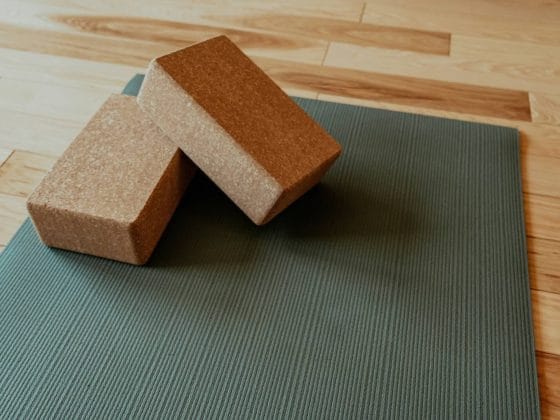For those looking to take their yoga journey a step further and become a yoga teacher, there are a number of different yoga courses, terms, as well as qualifications. A Registered Yoga Teacher (RYT) certification put forward by Yoga Alliance has become the industry standard. They have everything from 200-hour up to 500-hour levels and beyond. But what’s the difference between these different RYT certifications? Let’s explore!
We’ll look at what each certification requires, how long they take, and why you might choose one over the other. So get ready for your deep dive into all things Teacher Trainings.
So What is Yoga Alliance RYT?
Yoga Alliance is an organization that gives out Registered Yoga Teacher (RYT) certifications to individuals who graduate from schools that abide by the Yoga Alliance standards and are Registered Yoga Schools (RYS) and teach the modules required by them. The organization started back in 1997 and is now become the standard yoga teacher training certification recognized all over the world.
While you do not need a RYT to teach yoga, these days many employers ask for it. Even though I was never asked, it is still something you might want to consider when you are looking at the pros and cons of different yoga teacher trainings.
Just to be clear, Yoga Alliance’s credentialing system is a registry, not to be confused with other types of credentialing systems (such as certifications, accreditations, licensure, etc.).”
While in practice the lines are often blurred between a registry and an accreditation.
Different types of yoga alliance accreditation

Meaning of Acronyms for yoga students
- RYT 200: Registered Yoga Teacher
- RYT 300: Registered Yoga Teacher 300hr
- RYT 500: Registered Yoga Teacher 500hr
- E-RYT 200: Experienced Registered Yoga Teacher 200 hour
- “E” = Experience of 1,000 hours of yoga classes
- E-RYT 500 – Experienced Registered Yoga Teacher 200 hour
- “E” = Experience 4 years and another 1,000 hours of teaching
- RCYT: Registered Children’s Yoga Teacher
- RPYT: Registered Prenatal Yoga Teacher
- YACEP: Yoga Alliance Continuing Education (for experienced E-RYT teachers)
Meaning of Acronyms for yoga schools
- RYS 200: Registered Yoga School to teach 200hr course
- RYS 300: Registered Yoga School to teach 300hr course
- RYS 500: Registered Yoga School to teach 500hr course
- RCYS: Registered Children’s Yoga School
- RPYS: Registered Prenatal Yoga School
The ones we are concerned with though for the sake of this article is just RYT 200, RYT 300, and RYT 500. Moving on.
What are the RYT 200, RYT 300, and RYT 500?
RYT 200, RYT 300, and RYT 500 are the three main levels of Registered Yoga Teacher (RYT) certification, put forward by Yoga Alliance.

The first level of certification, RYT 200, requires a minimum of 200 hours of training usually done over a 4-week intensive program, which includes both classroom time together with teaching experience. This level of certification is for people who want to start teaching yoga to the public.
There are now online programs that allow you to complete the training over a period of 1 month – 1 year. The rest of the in-person trainings are usually done over 4 weeks, although there are longer part-time programs for working professionals.

To become RYT 200 certified, candidates must finish a teacher training program that meets the standards set by Yoga Alliance and pass the organization’s test. After completion of the course, they can register with Yoga Alliance, pay a fee and become registered in their database. This has to be followed up with conditioning education requirements of 75 hours every 3 years.
200-hour Teacher Training Modules Include
| 100 Hours | Techniques, Training and Practice |
|---|---|
| 25 Hours | Teaching Methodology |
| 20 Hours | Anatomy and Physiology |
| 30 hours | Yoga Philosophy, Lifestyle and Ethics for Yoga Teachers |
| 10 Hours | Practicum |
| 15 hours | Allocated as Contact Hours or Non-Contact Hours. |
The RYT 300 certification is an advanced level course that requires at least 300 hours of training and teaching experience that is usually done over a 6-week intensive program – although there are a variety of programs that have different longer schedules over 3-6 months.
In order to get an RYT 300, level of certification you previously must have taken a 200hr yoga teacher training prior to enrolling. Since 2019, Yoga Alliance has changed their rules, now allowing anyone to take the advanced 300hr course without having to take the 200hr course. The main difference according to the Yoga Alliance website is that the 300hr course is “more advanced, more detailed, and/or subtler, and the training enables them to teach with greater skill than could reasonably be expected of a RYT 200.”
300-hour Teacher Training Modules Include:
| 50 Hours | Techniques, Training and Practice |
|---|---|
| 5 Hours | Teaching Methodology |
| 15 Hours | Anatomy and Physiology |
| 30 hours | Yoga Philosophy, Lifestyle and Ethics for Yoga Teachers |
| 30 Hours | Practicum |
| 170 hours | Distributed amongst the Educational Categories based on your training’s focus |
Yoga Alliance’s highest level of certification is RYT 500. To get this certification, you must have completed both the 200hr course as well as the 300 hour course. This level of certification is for people who have taken advanced yoga teacher training and have at least 100 hours of teaching experience since completing training with a RYS 200 or the RYS 500.

While RYT 500 is the highest course, if you are looking to put another acronym by your name 😉 the experienced registered yoga teacher 500 (E-RYT 500) you can get after teaching 2000 hours over four years.
So what are the differences between the RYT 200, RYT 300, and RYT 500?
The amount of training and teaching experience needed is one of the biggest differences between these certifications. The RYT 200 certification is the first level and requires 200hrs of hands-on course learning which is the least training and experience of the three.
The RYT 300 certification is more advanced and requires 300hrs course learning and with it, you study more modules and get into the finer areas of the practice. So the difference between RYT 300 and RYT 500 certifications is that all teachers must have already earned a lower-level yoga certification.
For example, RYT 300 requires RYT 200, while RYT 500 you get only if you do the RYT 300 (and have already done the RYT 200) at a qualified registered yoga school and have taught for 100 hours.
Also, to get a RYT certification and maintain it, you have to keep learning and follow the Yoga Alliance’s Code of Conduct. This makes sure that RYT-certified teachers know what’s new in the field of yoga instruction and are committed to acting in a professional and ethical way.
It’s important to note that Yoga teachers don’t have to get RYT certifications, but doing so can give them credibility and recognition. It’s also important to note that there are other organizations that offer yoga teacher certifications, and some of them might have different standards, prerequisites, and requirements.
Do these certifications expire?
Your RYT yoga certification can expire. Yoga Alliance requires continuing education to keep the certification. They require RYT-certified teachers to complete 30 hours of training + at least 45 hours of teaching every three years in order to keep their certification.
How long does the RYTs take to complete?
The RYT 200 and RYT 200 can take anywhere from 4-6 weeks (usually) whereas the RYT 500 usually takes 10 weeks. This is if you are doing yoga 8 hours a day 6 days a week. There are programs, however, that stretch it over 3-6 months or even 1 year -so it all depends on what you are looking for.
In the end, whether you get don’t or not a Registered Yoga Teacher (RYT) registry is just an organization created to that there is some standard.
RYT 200, RYT 300, and RYT 500 are the main levels of RYT certification these days, so it would be wise to investigate what you are looking for before you jump in! Remember it’s not mandatory but might be worth getting.



